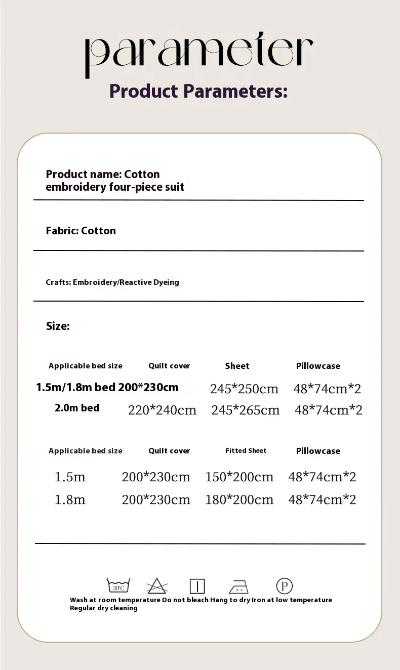The Textile Product Inspection Checklist
Introduction: In the textile industry, quality control is paramount. A comprehensive product inspection checklist ensures that every piece of clothing or textile meets the standards expected by customers and regulatory bodies. This guide aims to provide a detailed overview of the essential aspects to be evaluated during the inspection process.
-
Material Quality Assurance (MQA)
- Verify the authenticity of the raw materials used in the production process.
- Ensure compliance with international standards for fibers, yarns, and fabrics.
- Inspect for any defects such as holes, fraying, or discoloration.
- Test for contaminants like heavy metals or toxic chemicals.
-
Finishing Processes

- Evaluate the quality of the finishing treatments applied to the textiles.
- Check for uniformity in color, pattern, and texture.
- Examine the effectiveness of antibacterial and antifungal treatments.
- Verify that the dyes and finishes are harmless to the skin and environment.
-
Size Verification
- Use standardized measuring tools to ensure accurate size measurements.
- Verify that the sizes listed on the label match those measured.
- Check for shrinkage or swelling during washing and drying.
-
Stability and Durability
- Test for the resistance to various environmental conditions like heat, cold, and moisture.
- Evaluate the durability of the textiles under normal wear and tear.
- Assess the longevity of the products over time.
-
Packaging and Shipping
- Ensure that the packaging is secure to prevent damage during transport.
- Verify that all labels and markings are clearly visible and legible.
- Test for proper handling during shipping to avoid damage.
-
Environmental Impact Assessment (EIA)
- Conduct an EIA to assess the environmental impact of the textiles' production and disposal.
- Evaluate the use of sustainable practices and materials.
- Determine if the textiles meet the criteria for circular economy initiatives.
-
Compliance with Regulations and Standards
- Review the textile product's compliance with relevant laws and regulations.
- Ensure that it meets safety standards like fire resistance, lead content, and toxic substances.
- Verify that the product is certified by recognized testing laboratories.
Case Study: Let's take a closer look at a hypothetical scenario where a textile manufacturer faces a potential quality control issue. The manufacturer has recently launched a new line of high-end sportswear, but they have received complaints about the tightness of the fabric during washing. Upon inspection, the manufacturer discovers that the thread count of some garments exceeded the recommended limit, leading to the tightness observed in the wash cycle. To address this issue, the manufacturer promptly conducts a thorough review of their product inspection process, including MQA, finish processing, size verification, and stability testing. They also conduct an EIA to evaluate the environmental impact of their manufacturing processes and implement changes to reduce waste and improve sustainability. By addressing these areas, the manufacturer can regain consumer trust and maintain their reputation as a reliable brand in the textile industry.
Conclusion: In conclusion, a comprehensive textile product inspection checklist is essential for ensuring quality and customer satisfaction. By following the guidelines outlined above, manufacturers can identify and resolve issues early on, preventing costly mistakes and maintaining their competitive edge in the market. Remember, continuous improvement is key to maintaining and enhancing product quality throughout the entire lifecycle of a textile product.
随着纺织品市场的日益繁荣,对其质量、安全与环保的要求也越来越高,为了确保纺织品产品的质量与安全,进行全面的产品检测是必不可少的,本检测目录旨在为纺织品生产商、销售商和消费者提供全面的产品检测信息。
检测目录概述
本检测目录涵盖了纺织品产品的多个方面,包括纤维成分、质量标准、安全性能、环保指标等,以下是具体的检测项目和标准:

纤维成分检测
(1)纤维种类:包括纯棉、涤纶、亚麻等常见纤维类型。
(2)含量检测:检测纤维含量是否符合标准要求。
(3)纤维结构分析:通过显微镜观察纤维结构,评估纤维的均匀性和强度。
质量标准
(1)国家标准:参照国内外相关纺织品质量标准,制定本检测目录的质量标准。
(2)企业标准:各企业根据自身产品特点制定相应的质量标准。
安全性能检测
(1)有害物质限量:检测纺织品中是否存在对人体有害的物质。
(2)环保指标:检测纺织品是否符合环保要求,如环保染料使用、无毒无害等。
案例说明

以下是一些具体的案例,说明纺织品产品检测的重要性:
某品牌纯棉T恤检测结果
该品牌纯棉T恤经过纤维成分检测,发现纤维含量符合国家标准,纤维结构均匀,强度较高,该产品安全性能检测结果良好,无对人体有害的物质,环保指标符合要求,该品牌纯棉T恤质量与安全性能得到客户的一致好评。
某品牌涤纶面料检测结果
该品牌涤纶面料经过质量标准检测,符合国内外相关纺织品质量标准,但在环保指标方面,该产品存在一定的问题,需要加强环保处理措施,该品牌在今后的生产中需要更加注重环保指标的把控。
检测方法与流程
-
纤维成分检测方法与流程:采用化学分析、显微镜观察等方法进行检测,具体流程包括样品采集、预处理、化学分析、显微镜观察等步骤。
-
质量标准与安全性能检测方法与流程:参照相关国家标准和行业标准进行检测,各企业可以根据自身产品特点制定相应的质量标准和安全性能检测方法,具体流程包括样品采集、测试准备、测试实施等步骤。
总结与建议
本检测目录为纺织品产品提供了全面的检测信息,包括纤维成分、质量标准、安全性能、环保指标等方面的检测项目和标准,对于纺织品生产企业来说,应该严格按照本检测目录进行产品检测,确保产品质量与安全,各企业也应该根据自身产品特点制定相应的质量标准和安全性能检测方法,提高产品质量和竞争力,消费者在购买纺织品产品时也应该关注产品的质量与安全性能,选择符合国家标准和行业要求的纺织品产品。
Articles related to the knowledge points of this article:
The Story of Xian New District Lishan Textile Wholesale
The Story of Xian Xintianxiang Textile Wholesale in the西安市碑林区鑫天翔纺织品批发部
The Story of Dongguan Dailong Tianyu Textile Wholesale



